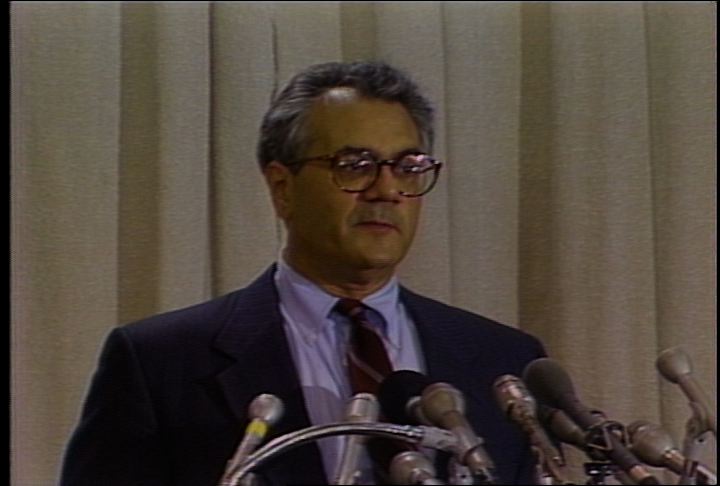
Description:
Maureen Spofford (mayor’s office) describes parade route in voiceover during footage of parade and Cambridge streets. In interview, Spofford describes how Macnas performance group became involved with the parade.
After this, interviews with different people:
Johnny Cunningham (musician, composer) describes how celebrating St. Patrick’s Day brings the community together.
Ann V. Quinlan (freelance writer/editor) talks about her anticipations for the parade.
Spofford describes a meeting with the mayor about the parade.
Richard Rossi (deputy city manager) describes police and staffing requirements.
Footage of Kathy, Department of Public Works worker, at her desk.
In interview, Spofford talks about the planning process.
After this, interviews with different people:
Pedro Smyth (parade organizer) talks about the lack of recognition of Cambridge’s Irish heritage and the purpose of parades.
Cunningham talks about his involvement as an MC of the parade.
Spofford talks about a press conference about the parade and reporters’ perception of the parade as a reaction to Boston’s parade. Footage of WCVB news coverage during her speech.
Quinlan talks about the need for multicultural events.
Spofford talks about the parade’s effect on the community.
Footage of Cambridge Traffic Department at work, intercut with people erecting a stand and hanging bunting. Footage of band and flag wavers, paper mache mask, parade marchers and watchers, signs, and parts of parade floats.
Kenneth E. Reeves (mayor), standing with young children, talks about the parade.
Street interviews with man in animal costume and with parade watchers and marchers. Footage of band.
Interviews with man in St. Patrick costume and with woman from Cambridge Public Library with snake paper-mache.
Footage of band playing “Four Leaf Clover,” intercut with shots of crowd on street.
In continuation of his previous interview, Cunningham talks about St. Patrick, intercut with footage of St. Patrick balloon.
Interview with parade marcher about St. Patrick. Footage of parade marchers, including Grand Marshal Walter J. Sullivan, and parade bands and floats, intercut with interview of parade watcher. Interview of parade marcher. Footage of parade marchers and of St. Patrick balloon falling down and being repaired.
Interview with parade watcher from Jamaica and other watchers, intercut with more footage of parade marchers.
Interview with Mr. Gay New England, with parade marchers in Druid costumes, and with parade watchers, intercut with more footage of parade.
Interview with Reverend Larry Love. Footage of parade watchers.
At parade stand, Reeves introduces CRLS Band. Flag wavers perform in front of stand. Irish Consul-General O’Reardon congratulates parade participants. Warren Tolman (State senator) briefly addresses crowd. Reeves introduces more parade marchers. More footage of parade marchers and floats. Footage of ambulance and firetruck, and from Somerville, truck (with anti-gay slogans) that marks the end of the parade.
Street interview with Reeves about the Macnas play that he saw, the parade and its inclusiveness, the community’s reaction.
Credits and music over footage of parade watchers and band performing the music. Footage of city officials reopening the street.






















































